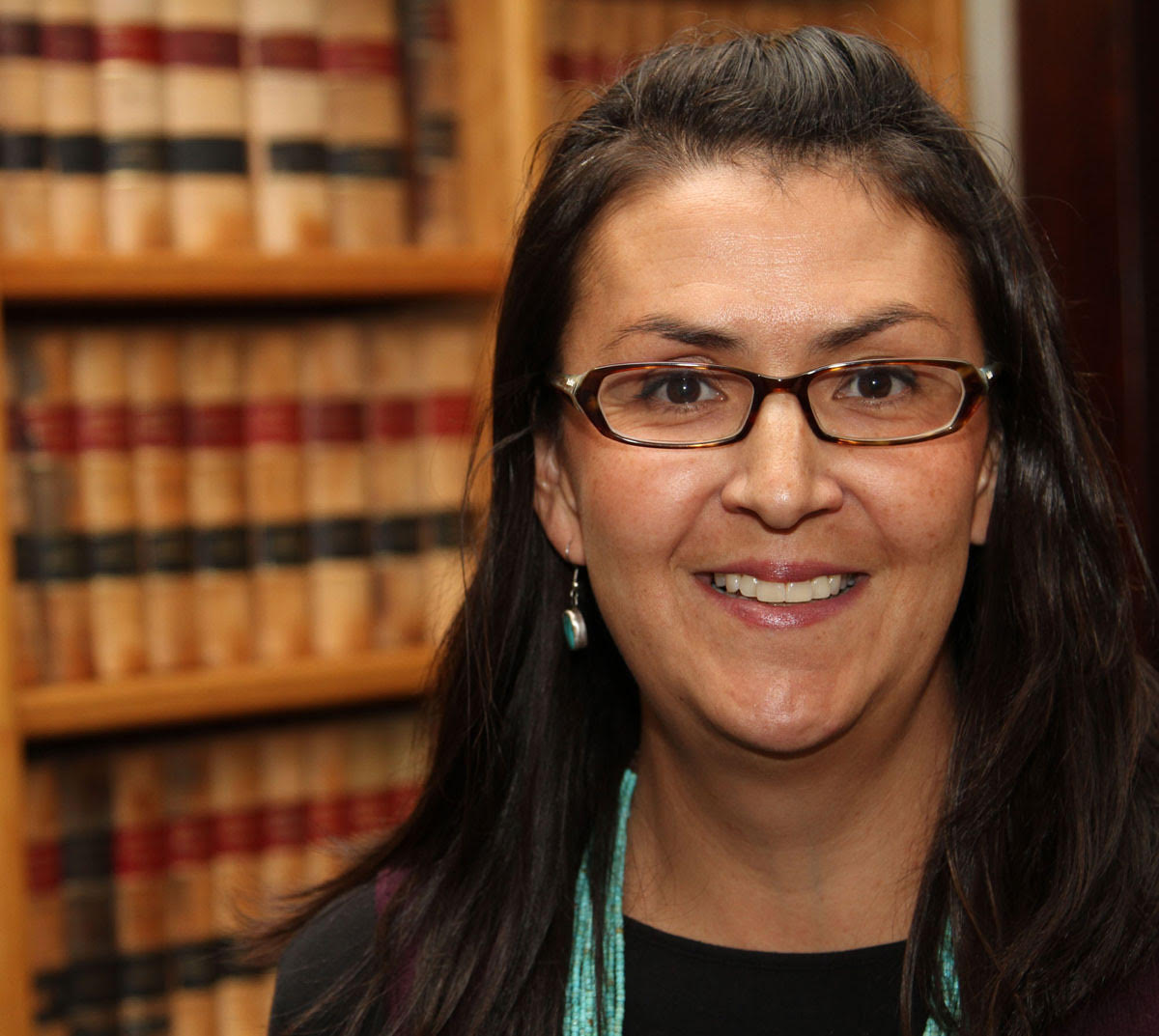To Fight Discrimination, Community is Key

Lucy Simpson is the Executive Director of the National Indigenous Women’s Resource Center (NIWRC), an enrolled citizen of the Navajo Nation, and a transplanted community member of the Northern Cheyenne Tribe. A lawyer by trade, she helped to found NIWRC in 2010 and has served as its executive director ever since. We were thrilled to have the chance to sit down with Lucy and learn more about her community involvement advocating for Indian nations, particularly in fighting for tribal sovereignty and the protection of Native women and their families.
Responses have been edited for length and clarity.
She Should Run: You’ve been active in the fight for tribal sovereignty, tribal code development, and the protection of Native women and their families for years. How did you first get involved in advocating for Indian nations?
Lucy Simpson: Going to school as a young child in urban Albuquerque, then spending time on the Navajo Indian Reservation during the summers, the social disparities that existed were very clear to me: the fact that my great-great-uncle had no running water, had just a wood stove made out of one of those big barrel trash cans for heat…
Once I was in college, I really became more aware of the ongoing impact of colonization and how federal policies shape the everyday life of Native people, not just hundreds of years ago but today. There’s not any part of our experience that isn’t impacted by the history of colonization.
SSR: What is one thing you wish people knew about the fight for racial justice, particularly for Native women?
LS: Some of the basic history of Native people in the United States, which is something we don’t get. It’s taught as history and not brought into the present day. Also that tribes predate the United States government; tribes today are separate governments, we’re not part of state or county government structures. Because of that history, we have a government-to-government relationship with the United States. That means we’re considered a political class, not a racial class, even though we do experience racism and discrimination. With this political lens, we have to advocate for protections that the federal government has a federal trust responsibility to implement.
SSR: A foundational element of racial justice work is coalition building. How do you identify important players in your community and get them to work with you, particularly when there is pushback within the community?
LS: We all have issues that we’re working on, but it’s all connected. You can’t work in one area without seeing those ripples impacting the rest. At the center is the hope for the well-being of our community, and we have to be willing to listen to each other and remember that we’re all doing this work for the love of our community.
SSR: Change comes slowly and is hard-won. When it seems like the fight against racism will never end, how do you find and celebrate victories in your work?
LS: You have to not only celebrate the victories in your work, but also raise up those of all of your allies. It’s not justice if it’s just us. It’s the work that we all do together. When we lift up the successes of our allies, we end up having more to celebrate and it becomes easier to see how our collective work actually has an impact on the world.
SSR: While massive strides have been made for women’s representation in elected office, there are still countless offices that have yet to have their “first.” Many women in our audience looking to get civically engaged in their community may be the only person of color in the room. What advice do you have for carrying this heavy–and lonely–mantle?
LS: It goes back to embracing the love that we have for our people and our communities. I work in the movement to end violence against Native women, and it’s really emotionally and mentally difficult work, but it’s my love for my people and remembering the sacrifices of my ancestors and centering myself on those truths that give me that strength to move forward. This isn’t just something for our Native communities; other BIPOC communities have similar histories, and when you remember those sacrifices and that love you have for your people, that’s what gives us the strength to carry that heavy load.
I also think we need to really work on building relationships with other BIPOC women, not just within our own community. Even if they’re not in the same room, there are amazing women in similar rooms. If we can make those connections and uplift each other, that’s really powerful.
SSR: We’ve focused a lot on how to get involved with the issues that women encounter day to day. What advice would you give our audience on how to take their first step into spotlighting racial injustice in their communities?
LS: Community is key. Spotlighting racial injustice can be isolating–it can be kind of scary, depending on where you’re doing it! Build those networks and that support system because if we’re going to address systemic racism, we have to have the fortitude to keep going, and you only get that through networks, relationships, and community.
Interested in learning more about how you can get involved in fighting racism in your community? Check out our webinar on demand, Lifting As We Climb: How We Can Grow a Diverse Movement to Address Racism.
Enjoying our blog content? Help pay it forward so more women are able to wake up to their political potential. Donate to support She Should Run.
